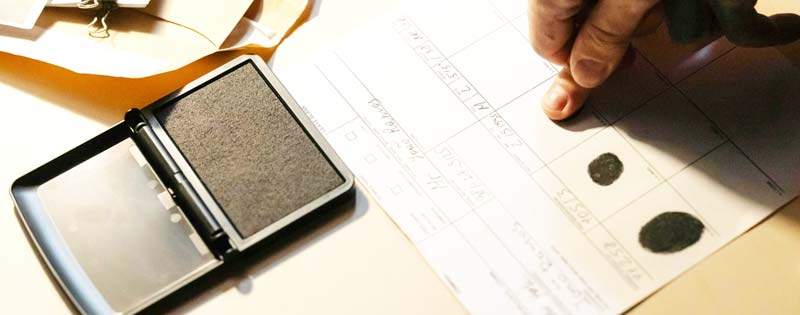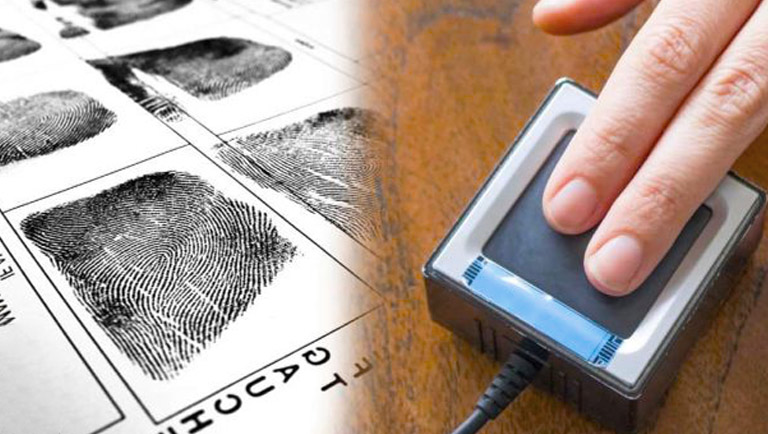The world of biometric identification has always been fascinating, and among its various forms, fingerprinting stands out as a particularly intriguing and widely used method. In the United States and many other countries, fingerprinting has evolved from a mere tool for criminal identification to a multifaceted technology used across numerous sectors. This comprehensive guide explores the diverse applications of fingerprinting in the USA as an example, its impact on society, and the concerns it raises in terms of privacy and data security. As technology advances and the use of biometrics becomes more prevalent, understanding the role of fingerprinting in modern America is crucial for both professionals and the general public.
Key Takeaways:
- Versatile Usage: Fingerprinting is utilized in various sectors in the USA, including law enforcement, employment, immigration, and even civilian services.
- Law Enforcement Tool: It is an essential tool for criminal investigations, with agencies like the FBI relying heavily on fingerprint databases for identifying suspects and solving crimes.
- Employment Screening: Many industries require fingerprint-based background checks for employment, especially in sensitive fields such as education, healthcare, and government roles.
- Immigration and Citizenship: Fingerprinting plays a critical role in the immigration process, aiding in background checks for visas, green cards, and citizenship applications.
- National Security: It is crucial for national security purposes, particularly in granting security clearances for handling sensitive information in government and military roles.
- Technological Evolution: The technology behind fingerprinting has evolved significantly, leading to its integration into everyday civilian applications like personal identification, secure banking, and access control systems.
- Privacy Concerns: Despite its widespread use, fingerprinting raises important privacy and data security issues, highlighting the need for careful management and regulation of biometric data.
- Future Prospects: The ongoing advancements in biometric technology suggest an increasing reliance on fingerprinting, necessitating a balance between technological benefits and ethical considerations.
History and Evolution of Fingerprinting in the USA
The story of fingerprinting in the United States is a fascinating journey through time, marked by significant technological advancements and an evolving understanding of its importance in both forensic science and everyday applications. This section will explore the origins of fingerprinting technology, trace its development in America, and highlight key milestones and historical figures who have contributed to its growth.
- Early Beginnings: The inception of fingerprinting as a form of identification dates back centuries, but its scientific foundation was laid in the late 19th and early 20th centuries. We’ll delve into how fingerprinting was initially perceived and the early methods used.
- Forensic Science Breakthroughs: The transition of fingerprinting into a crucial tool for law enforcement will be discussed, focusing on how it became integral in criminal investigations and the development of systematic methods for collecting and analyzing fingerprints.
- Technological Advancements: The evolution of fingerprinting technology, from ink-based methods to digital scanning and analysis, will be outlined. This includes the introduction of automated fingerprint identification systems (AFIS) and their impact on law enforcement and security.
- Influential Figures: Key individuals who played pivotal roles in the advancement of fingerprinting in the USA, such as law enforcement officials, scientists, and policymakers, will be highlighted. Their contributions helped shape the current state of fingerprinting technology and its applications.
- Integration into National Systems: The establishment of national fingerprint databases, such as the FBI’s Integrated Automated Fingerprint Identification System (IAFIS), and their role in national security and public safety will be examined.
- Contemporary Uses and Expansions: The expansion of fingerprinting into various sectors beyond law enforcement, such as employment, immigration, and consumer electronics, showcases its versatility and the broad scope of its applications in modern society.
- Legal and Ethical Milestones: Significant legal cases and ethical debates surrounding the use of fingerprinting, especially in regards to privacy and civil liberties, will be discussed. This includes the challenges and controversies that have emerged alongside its widespread adoption.

Fingerprinting in Law Enforcement
The use of fingerprinting in law enforcement is a cornerstone of modern criminal investigation in the United States. This section will delve into the integral role of fingerprinting in identifying suspects, solving crimes, and maintaining criminal databases. The focus will be on how law enforcement agencies utilize this technology, the challenges they face, and the advancements that have shaped its current use.
- Identification and Crime Solving: An exploration of how fingerprinting is used by law enforcement agencies to identify suspects and solve crimes. This will include a look at the methods used to collect, analyze, and match fingerprints at crime scenes.
- Technological Innovations and Databases: The development and use of automated fingerprint identification systems (AFIS) and the Integrated Automated Fingerprint Identification System (IAFIS) managed by the FBI will be highlighted. The role of these databases in aiding law enforcement agencies across the nation will be discussed.
- Interagency Collaboration and Information Sharing: The importance of collaboration between various law enforcement agencies at local, state, and federal levels in the exchange of fingerprint data will be examined.
- Challenges in Fingerprint Analysis: The challenges faced by law enforcement in fingerprint collection and analysis, such as partial prints or degraded samples at crime scenes, will be discussed, along with the ways these challenges are addressed.
- Legal Considerations and Courtroom Evidence: The admissibility of fingerprint evidence in court and the legal standards required for its use in criminal proceedings will be explored. This will include a look at landmark court cases that have influenced the use of fingerprint evidence.
- Training and Expertise: The specialized training and expertise required for forensic experts who analyze fingerprints will be outlined. This will cover the certification processes and the skills needed to accurately interpret fingerprint data.
- Future Directions and Technologies: Emerging technologies in fingerprint analysis, such as 3D fingerprint imaging and advanced biometric software, and their potential impact on law enforcement practices will be discussed.
Employment Background Checks and Fingerprinting
The Role of Fingerprinting in Employment Verification
Fingerprinting has become a fundamental aspect of employment background checks in various industries across the United States, especially in sectors where trust and security are paramount, like education, healthcare, finance, and government. Its primary role is ensuring the accuracy of identity confirmation, making it a crucial part of the employment screening process.
Unique Advantages of Fingerprint-Based Checks
Fingerprints offer a level of uniqueness and security that other forms of identification cannot match. This uniqueness is vital in reliably verifying an individual’s criminal history and ensuring the background check is against the correct records.
Regulatory Compliance in Fingerprinting for Employment
Employers must navigate a maze of federal and state laws when implementing fingerprint-based background checks. This includes compliance with the Fair Credit Reporting Act (FCRA) and adherence to guidelines set by the Equal Employment Opportunity Commission (EEOC) to avoid discriminatory practices.
Industries Mandating Fingerprint Checks
Certain industries, such as education, healthcare, and law enforcement, often require fingerprint-based background checks by law. These checks are crucial for ensuring the safety of vulnerable groups and maintaining professional integrity.
Privacy and Data Security Concerns
With the effectiveness of fingerprinting comes concerns about privacy and data security. Employers are responsible for ensuring that fingerprint data is securely stored and used solely for background checks, complying with strict regulations to protect personal information.
Technological Evolution in Fingerprinting Methods
The advancement of technology has led to more sophisticated and efficient systems for conducting fingerprint-based background checks, enhancing the process’s speed and accessibility for employers.
This structured approach to discussing fingerprinting in employment background checks not only provides a comprehensive understanding but also optimizes the content for better SEO performance, targeting key aspects and concerns related to the topic.

Fingerprinting in Immigration and Naturalization
Essential Role in Immigration Processes
Fingerprinting has become an integral component of the immigration and naturalization process in the United States and elsewhere. It is used extensively by U.S. Citizenship and Immigration Services (USCIS) and other federal agencies to conduct thorough background checks on individuals applying for visas, green cards, or citizenship. This practice ensures that applicants do not have a criminal background or any other issues that might pose a security threat. To obtain some vital documents it is often needed to provide fingerprints.
Enhancing Security and Verification
The use of fingerprinting in immigration services enhances the security of the immigration process. By verifying the identity of applicants through their unique fingerprints, authorities can effectively prevent identity fraud and ensure that immigration benefits are granted to the rightful applicants. This level of verification is crucial in maintaining the integrity of many immigration systems.
Fingerprinting in Visa and Citizenship Applications
During visa and citizenship application processes, fingerprinting is a standard requirement. It helps in the accurate and efficient processing of applications, ensuring that the background checks are linked to the correct individual. This is particularly important in cases where names or other identifying information may be common or similar to others.
Addressing Privacy Concerns
While fingerprinting is a powerful tool for identity verification in immigration, it also raises privacy concerns. The handling, storage, and use of biometric data are subject to strict regulations to protect individuals’ privacy. The USCIS and other agencies are tasked with ensuring that this sensitive information is handled securely and responsibly.
The Future of Biometric Technology in Immigration
The field of biometrics, including fingerprinting, is continuously evolving. New technologies are being developed and integrated into the immigration process to make it more secure and efficient. These advancements promise to further streamline immigration procedures while maintaining high security and accuracy levels.
Security Clearances and National Security
Fingerprinting in Security Clearance Protocols
Fingerprinting is a critical element in the process of granting security clearances in the United States, particularly for positions within the government, military, and other areas involving national security. The practice ensures that individuals who have access to sensitive information are thoroughly vetted and deemed trustworthy.
Ensuring National Safety and Confidentiality
The primary purpose of using fingerprinting in security clearances is to safeguard national safety and maintain the confidentiality of sensitive information. By verifying the identities and backgrounds of individuals, authorities can prevent unauthorized access to classified information, thus protecting national interests.
Integration with National Security Databases
The process involves integrating fingerprint data with national security databases to check for any past criminal activities or associations that might pose a risk to national security. This comprehensive background check is a crucial step in the security clearance process.
Challenges in Security Clearance Fingerprinting
The use of fingerprinting in security clearances is not without challenges. Issues such as data accuracy, privacy concerns, and the handling of sensitive information are critical considerations. Ensuring the integrity and security of the fingerprinting process is paramount in these high-stakes situations.
Technological Advances and Future Directions
The field of biometric security, including fingerprinting, is continually evolving. Technological advances are constantly being integrated into security clearance processes to enhance accuracy and efficiency. The future of fingerprinting in national security looks toward more sophisticated and secure systems to handle the increasing complexity of threats.
Balancing Security and Individual Rights
A key aspect of using fingerprinting for security clearances is balancing the need for national security with the protection of individual rights and privacy. This involves navigating legal and ethical considerations while maintaining stringent security protocols.

Civilian Applications of Fingerprinting
Expanding Beyond Law Enforcement
Fingerprinting, traditionally associated with law enforcement and security, has significantly expanded into civilian applications in the United States. This expansion reflects the versatility of fingerprinting as a tool for personal identification and security in various everyday contexts.
Fingerprinting in Personal Identification and Services
One of the most common civilian uses of fingerprinting is in personal identification services, such as for driver’s licenses and state identification cards. Many states have adopted biometric identifiers, including fingerprints, to enhance the security and authenticity of these documents.
Enhanced Security in Banking and Finance
The banking and finance sector has also embraced fingerprinting technology, using it to secure transactions and personal accounts. This application has gained popularity due to its convenience and the added security layer it provides against fraud and identity theft.
Access Control and Consumer Electronics
Fingerprinting technology is increasingly being used for access control in high-security areas and in consumer electronics like smartphones and laptops. The technology offers a secure and user-friendly way to restrict access to sensitive information and personal devices.
Privacy and Data Protection Concerns
Despite its advantages, the use of fingerprinting in civilian applications raises significant privacy and data protection concerns. The collection, storage, and use of biometric data in civilian contexts must be carefully managed to safeguard individual privacy rights.
Future Trends and Technological Advancements
The civilian use of fingerprinting is likely to continue growing, driven by advancements in technology that make it more accessible and reliable. Future trends may include even broader applications in everyday life, further integrating biometric security into the fabric of society.
Regulatory and Ethical Considerations
As fingerprinting technology becomes more widespread in civilian life, regulatory and ethical considerations become increasingly important. Ensuring the responsible use of this technology requires a balance between convenience, security, and the protection of individual rights.
Legal and Ethical Milestones in Fingerprinting
The Evolution of Legal Frameworks
The use of fingerprinting, particularly in the United States, has necessitated the development of robust legal frameworks to regulate its application in various fields. These frameworks are crucial for ensuring that the use of fingerprinting aligns with legal standards and respects individual rights.
Landmark Court Cases
Several landmark court cases have shaped the legal landscape regarding the use of fingerprints. These cases have addressed issues such as the admissibility of fingerprint evidence in court, the legality of mandatory fingerprinting in certain professions, and privacy concerns related to biometric data collection.
Ethical Considerations in Fingerprinting
Alongside legal aspects, ethical considerations play a significant role in the use of fingerprinting. This includes debates over privacy implications, the potential for misuse of biometric data, and the ethical responsibilities of entities that collect and use fingerprint information.
Fingerprinting and Privacy Rights
Privacy rights are a central concern in the discussion of fingerprinting, especially considering the sensitive nature of biometric data. The handling, storage, and use of fingerprint data must comply with privacy laws and respect individual consent and autonomy.
Regulatory Compliance and Standards
Compliance with regulatory standards is essential for organizations that utilize fingerprinting. This includes adhering to federal and state regulations, as well as international guidelines where applicable, to ensure ethical and lawful use of this technology.
Future Legal and Ethical Challenges
As technology evolves and the use of fingerprinting expands, new legal and ethical challenges are likely to emerge. This may include addressing issues related to advanced biometric technologies, cross-border data sharing, and the changing landscape of privacy rights.
Balancing Security and Civil Liberties
A key aspect of the legal and ethical discourse around fingerprinting is finding a balance between enhancing security and protecting civil liberties. This involves navigating the complexities of using biometric data in a way that maximizes its benefits while minimizing potential harms.
Future Prospects and Innovations in Fingerprinting Technology
Technological Advancements in Fingerprinting
The field of fingerprinting technology is rapidly evolving, with continuous innovations enhancing its accuracy, efficiency, and scope of application. These advancements are not only refining existing systems but also opening new avenues for the use of fingerprinting in various sectors.
Biometric Technology Integration
One of the key areas of innovation is the integration of fingerprinting with other biometric technologies, such as facial recognition and iris scanning. This multimodal approach enhances security measures and offers more robust systems for identity verification.
Mobile and Consumer Applications
The proliferation of fingerprinting technology in mobile devices and consumer electronics marks a significant shift towards personal security. This trend is likely to continue, with more sophisticated and user-friendly biometric solutions being integrated into everyday gadgets.
Impact on Law Enforcement and Forensic Science
Advancements in fingerprinting technology have profound implications for law enforcement and forensic science. Enhanced imaging techniques, faster database matching, and improved accuracy in difficult conditions (like smudged or partial prints) are some areas where technology is making a significant impact.
Privacy and Security Challenges
With technological advancements come new challenges in privacy and security. The increased use of biometrics raises questions about data protection, consent, and the potential for surveillance. Addressing these challenges is crucial for maintaining public trust in fingerprinting technologies.
Global Standards and Interoperability
As fingerprinting technology evolves, there is a growing need for global standards and interoperability, especially in areas like international travel, immigration, and cross-border law enforcement. Harmonizing these standards will be key to maximizing the effectiveness of fingerprinting on a global scale.
Anticipating Future Trends
Looking ahead, anticipating future trends in fingerprinting technology involves not only technological predictions but also understanding the societal and ethical implications of these advancements. This includes staying ahead of potential misuse of technology and ensuring that innovations benefit society as a whole.

Conclusion: Reflecting on Fingerprinting’s Impact and Future
As we have explored the various dimensions of fingerprinting in the United States, it becomes evident that this technology plays a crucial role in many aspects of society. From law enforcement and national security to civilian applications and immigration processes, the impact of fingerprinting is widespread and significant.
The journey of fingerprinting, from its early days as a novel method for identifying criminals to its current status as a sophisticated biometric tool, reflects the remarkable advancements in technology and science. Its integration into daily life, whether through employment background checks or personal devices, demonstrates its versatility and the trust placed in its accuracy and reliability.
However, this reliance on fingerprinting also brings to light important concerns regarding privacy, data security, and ethical considerations. The balance between leveraging the benefits of fingerprint technology and protecting individual rights is a continuous challenge, requiring ongoing dialogue and regulation.
Looking forward, the future of fingerprinting is intertwined with the advancement of technology. As biometric systems become more integrated into various sectors, the need for robust legal frameworks, ethical guidelines, and advanced security measures will be more critical than ever.
In conclusion, fingerprinting, as a cornerstone of modern identification and security systems, has transformed many facets of society. Its continued evolution will undoubtedly bring new opportunities and challenges, making it a fascinating and vital field to watch in the years to come.
FAQ Section: Addressing Common Questions
- How Accurate is Fingerprinting for Identification?
- Fingerprinting is highly accurate for identification purposes due to the uniqueness of fingerprints. However, the accuracy can be affected by the quality of the fingerprint sample and the technology used for analysis.
- Are There Privacy Risks Associated with Fingerprinting?
- Yes, there are privacy risks, especially concerning the storage and handling of biometric data. Regulations like the GDPR in Europe and various U.S. state laws aim to address these concerns.
- Can Fingerprinting Be Used for Employment Discrimination?
- While fingerprinting itself is a neutral tool, its application in employment could potentially lead to discrimination if not used in compliance with laws like the EEOC guidelines.
- Is Fingerprinting Used in Banking and Consumer Electronics Secure?
- Fingerprinting in banking and consumer electronics is generally secure, but it also depends on the specific technologies and security protocols employed by the institutions and manufacturers.
- What Are the Future Trends in Fingerprinting Technology?
- Future trends include more sophisticated biometric systems, integration with AI and machine learning, and a greater focus on privacy-enhancing technologies.
- How Is Fingerprinting Regulated?
- Fingerprinting is regulated through a combination of federal and state laws, industry standards, and international guidelines, depending on its application.
- Can Fingerprint Data Be Hacked or Misused?
- Like any digital data, fingerprint data can be vulnerable to hacking or misuse. This underscores the importance of robust cybersecurity measures and responsible data management practices.



